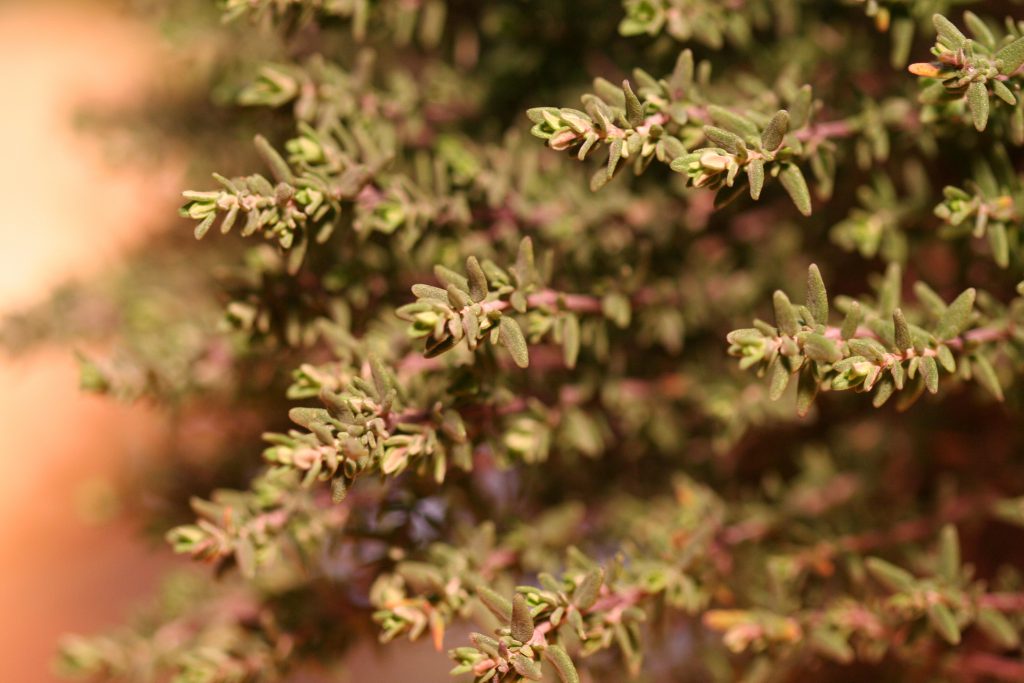
Thyme
There are many different kinds of thyme that differ in appearance and in taste. Probably the most used version is the common or garden thyme. It tastes spicy and tangy with a hint of cloves. It has gray-green curled leaves that are rolled into the center with a felty underside.
The uses of thyme in the kitchen are many and varied. The dry version is more aromatic than the fresh kind and should be added to dishes early in the cooking process in order that the real depth of taste is released throughout cooking. You can chop it up small or throw in whole stems as long as you remove the stems before serving. If you strip the leaves from the stem before you cook then you don’t need to do anything before you serve up.
Thyme is a fabulous partner for garlic, and you can use it for soups, vegetables, fish, meat, game and poultry, stocks and shellfish. It can handle the heat too so if you want to pan-fry using thyme you can do- although in this case the quicker the better.
You can keep fresh thyme in the refrigerator in a sealed plastic bag or an airtight container for several days. Dried thyme should be kept in an airtight container and in the dark. That way it will keep its strength for up to a year.
TIP
Lemon thyme, as the name suggests, has a lemony note and is a great addition to fish, white meats and poultry- just beware that it doesn’t taste too soapy so try it before adding it to the pot.

Schreibe einen Kommentar